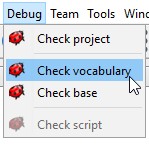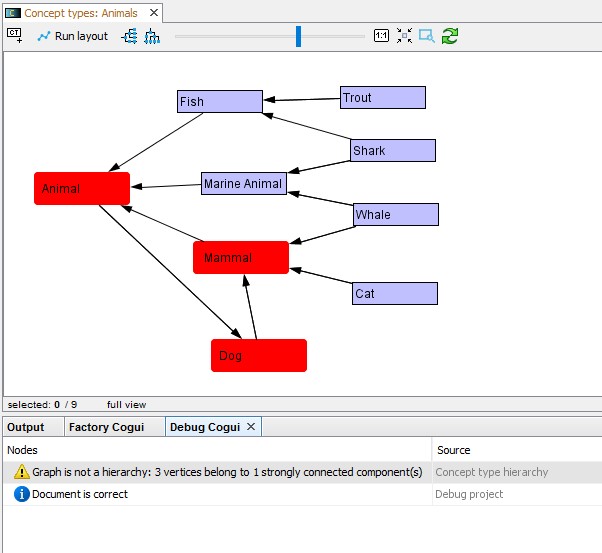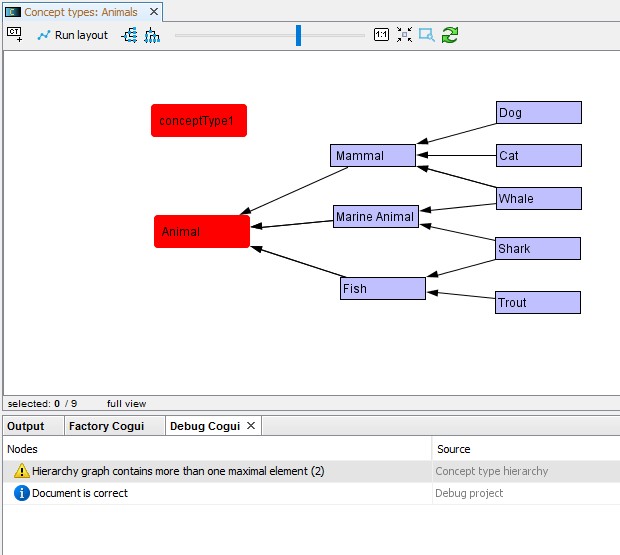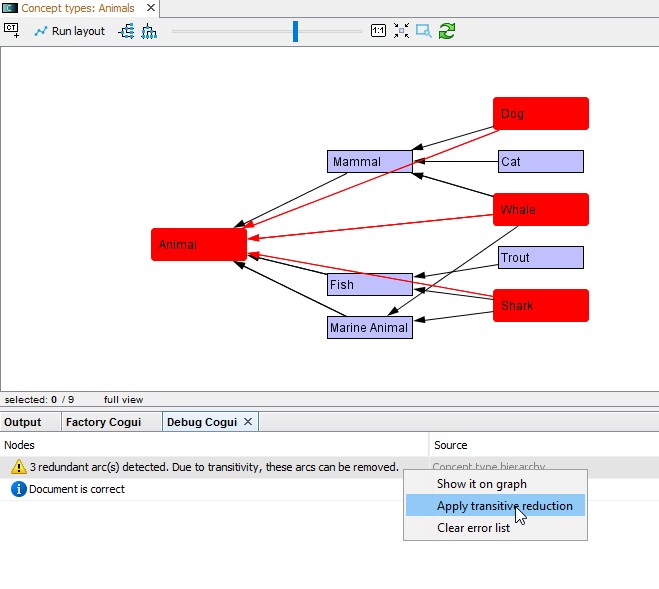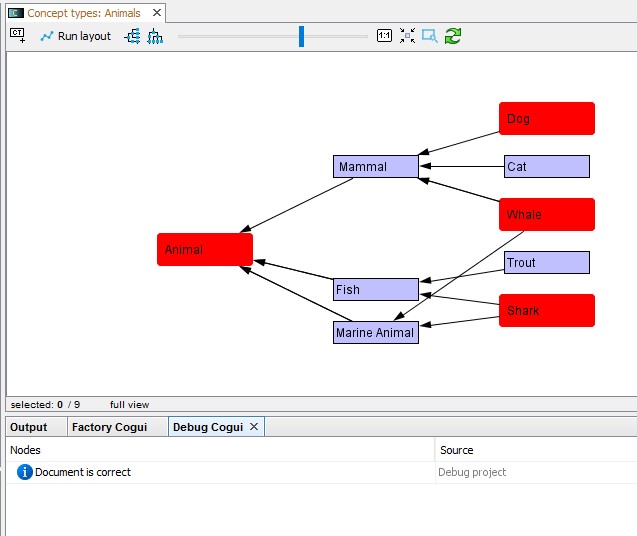Concept type hierarchy control
Action to control of the concept types hierarchy is provided in Debug menu: |
|
Only one critical error can occur with the graph structure: the detection of a circuit. Assume that 2 types A and B on a circuit, i.e. a path exist from A to B and another exist from B to A. It means A is a kind of B and B is a kind of A
|
CoGui control detects circuits: all the animals are not dogs |
However, it is possible for a project consisting of several pieces of ontologies to work with several synonymous types from multiple equivalent URIs (owl: SameAs). Despite the warnings CoGui is able to work with the circuits, all the concept types belonging to the same circuit are considered as equivalent.
Another model constraint is that the concept types hierarchy must have a maximal concept type. By default CoGui names it 'Top', feel free to change its name or to choose another vertex as the maximal. A warning message occurs if the hierarchy contains more than one maximal element. The tool does not automatically add a maximal abstract type to the hierarchy but it is recommended to respect this constraint.
|
A single maximal type is required |
Another warning can occur when the user draws redundant arcs. If A is a kind of B and B a kind of C, by transitivity CoGui 'knows' that A is a kind of C, hence an arc between A and C is correct but redundant. These extra arcs can obstruct the graph view but extra entries on the tree representation could be used as sort of shortcuts for often used types.That is the reason why CoGui accepts and stores redundant arcs.
When a message (error or warning) occurs, it can hold the action to solve it. The Repair box checked indicates that a repair action is available:

In this case all the redundant edges can be removed with the message popup menu with the action named 'Transitive reduction'.
|
|
Created with the Personal Edition of HelpNDoc: Free EPub and documentation generator
